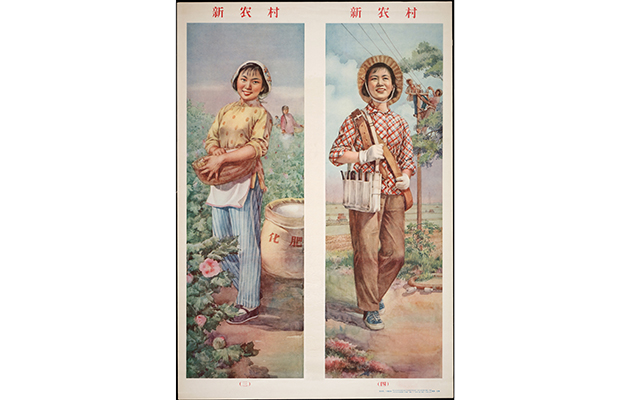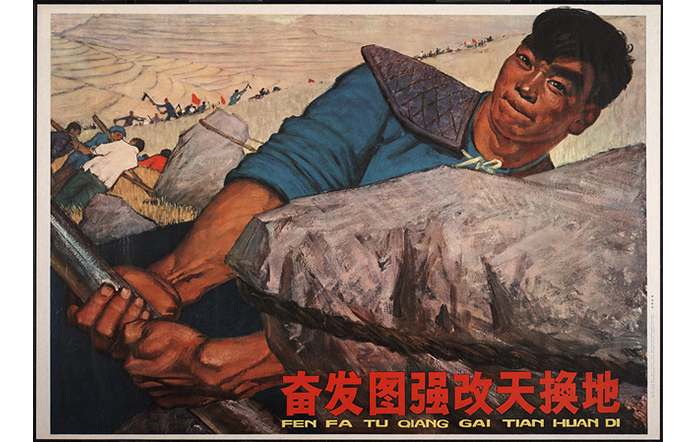
Propaganda Posters were a vital way of instilling the values of the new order after the Civil War in China, but they quickly diverged from the socialist realist template, writes Joe Llyod.
How does a new order perpetuate itself? This was among the questions facing the Communist party when it seized control of China in 1949. Xuanchuan, or propaganda, immediately provided an answer.
During the Japanese occupation, nationalists had encouraged resistance with a series of propaganda posters. These remain shocking in their violence. One has fists emerging from a oating love-heart to pummel a Japanese soldier to death; another shows a demonic invader both drowning and trampled underfoot. But for a regime looking to entrench its ideology across a population of 580 million people, a less confrontational idiom was required.

The Communist party established a Department of Propaganda as early as 1924, and by the 1930s it was distributing woodcuts depicting unjust instances of capitalist oppression. It was with the party’s Civil War victory that the poster became the most prominent medium of propaganda in the country.
Posters were cheap and quick to reproduce – they could move from design to distribution in a single working day. They could be placed in workplaces, train stations and other public spaces, printed in magazines, books and as postage stamps, and sold in shops to decorate homes. And they came without the historical baggage of other art forms: a new medium for a new age.

The Cultural Revolution of the late- 1960s saw a temporary shift into the aggressive rhetoric, red-and-black hues and bracing motion of constructivist poster art. One of the most inventive, from 1966, shows comically diminished members of the dissident Inner Mongolian council skewered by a crimson calligraphy pen.
But beyond this fervid period, propaganda posters largely kept to a similar pattern well into the Deng Xiaoping era. As Mao’s mission to eradicate folk traditions was supplanted by Deng’s more pragmatic approach, pre-modern symbolism proliferated, such as children wearing protective charms and clasping auspicious carps.
Posters declined fast in the 1990s, losing ground first to television and then to the internet. Those that remained, such as bilingual Chinese/English advisories against SARS and AIDS, began to employ the photographic techniques of Western advertising.
As China’s power swells, it is perhaps fitting that an aesthetic seeking to depict the world-as-it-ought-to-be has been supplanted by one with apparent verisimilitude. And yet there are some traces of what came before. A 2000 poster promoting Beijing’s bid for the summer Olympics shows ve hands, attired in vivid colour, grabbing each other by the wrist. As a celebration of strength and community, it could have fit at most points in the preceding 50 years.
Subscribe to Icon for the full story.
















